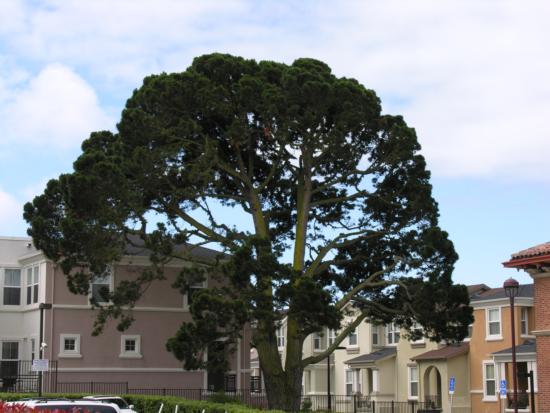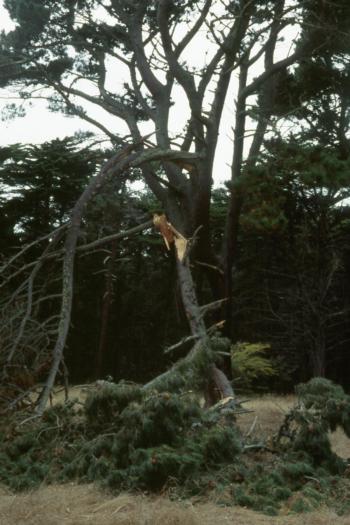Pinus radiata
Monterey pine was, until the emergence and proliferation of Pine Pitch Canker disease, a widely planted landscape tree in California. In 1994 it was the most commonly reported species in the CTFRP dabase because at that time a large number of reports originated from Golden Gate Park in San Francisco where the species is a major component of the tree population in the park. Monterey pine is now the second most commonly reported species in the CTFRP database closely following coast live oak. (See CTFRP Statistics: 50 or more) It is native to the slopes and bluffs of the central California coastline in closed cone forests below 1000ft.
The data for 1994 in the comparison table is derived from Edberg, R. J., Berry, A.M. and L.R. Costello. 1994. Patterns of Structural Failure in Monterey Pine. Journal of Arboriculture 20(6).
Pinus radiata (Monterey pine) Summary Comparisons 1994 and 2010
| 1994 | 2010 | ||
| All species | 1216 | 4886 | |
| P. radiata | 186 | 505 | |
| % of total | 15.2% | 10.3% | |
| Next top species %of total | Cupressus macrocarpa | 12% | 9% |
| Quercus agrifolia | 9% | 10.8% | |
| Quercus lobata | 5% | 4.8% | |
| Location of failure | trunk | 21% | 27.5% |
| branch | 59% | 38.4% | |
| root | 20% | 34.1% | |
| Mean DBH | 34" | 33" | |
| Mean height | 71' | 70' | |
| Site categories | park | 65% | 54% |
| residential | 14% | 20% | |
| school | 14% | 11% | |
| Stand type | planted | 85% | 86% |
| Branch defects (excluding decay) |
heavy lateral limbs | 75% | 73.4% |
| multiple trunks | 10% | 10% | |
| Decay (branch) |
? | none 88% | |
| Trunk defects (excluding decay) |
dense crown | 19% | 16% |
| crook/sweep | 17% | 8% | |
| lean | 12% | 13% | |
| multiple trunks | 14% | 12% | |
| Decay (trunk) |
? | some 50% | |
| Root defects (excluding decay) |
lean | 28% | 20% |
| uneven/one sided |
? | 15% | |
| Decay (root) |
some 25% | some 26% | |
| Branch point of failure | at attachment | 26% | 29% |

